Film Inquiry Recommends: 7 “So Bad It’s Good” Films
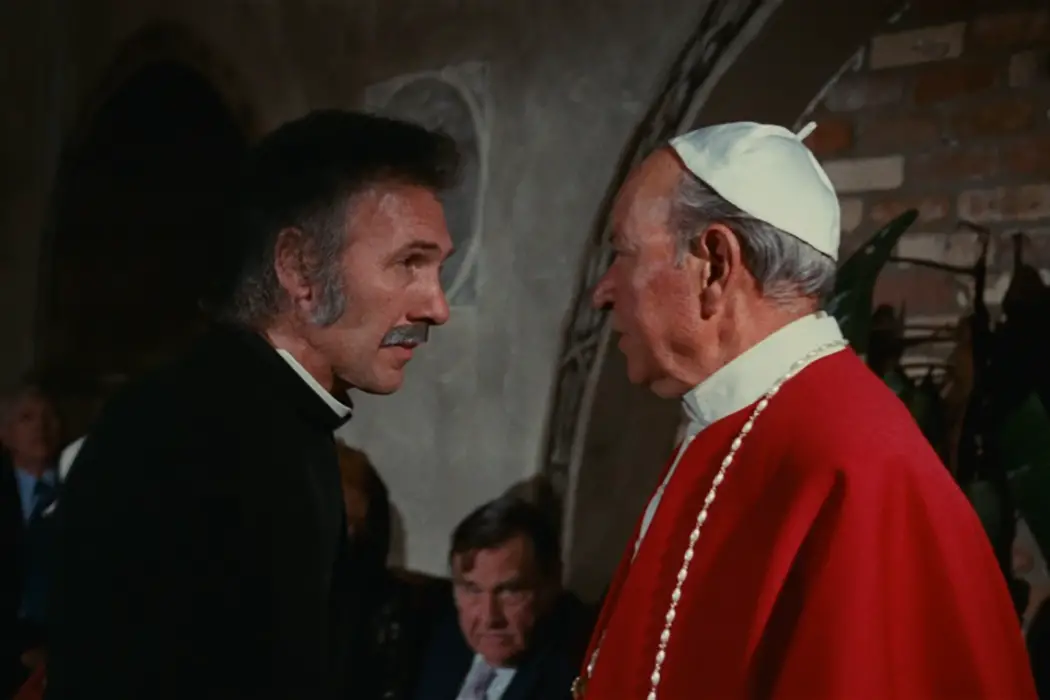
Alex is a 28 year-old West Australian who has a…
Over at our official Facebook page, we are currently posting daily film recommendations, with each week being a different theme. This is a collection of those recommendations! This week’s theme is films that are so bad they’re good. They are the epitome in ironic movie-watching: intentionally watching terrible films in order to laugh at their technical failures, providing more humour than most comedies nowadays.
Popularised by the mainstream success of the underground viewings of Tommy Wiseau’s The Room, the idea of exploiting bad films to highlight their comedic value is now huge. Large amounts of film festivals, YouTube channels and internet forums purely exist in order to find and watch the hundreds of different terrible films that have been released throughout cinematic history.
Some of the most famous examples include The Room, Birdemic, Samurai Cop and The Amazing Bulk. The following are some alternative picks, looking at the more questionable side of cinema.
1. The Manitou (1978, William Girdler)
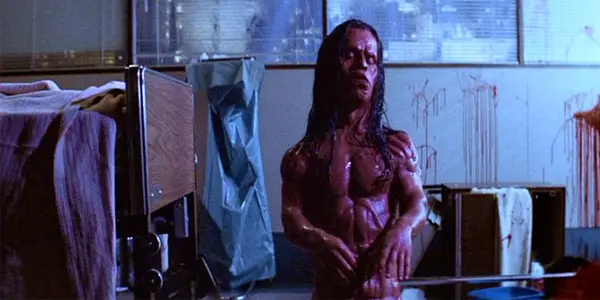
As Hollywood has shown us repeatedly throughout cinematic history, any new or original film that is a success will always be followed by a series of derivative and lazy knockoffs in order to capitalise on that film’s hype and popularity. At the moment within the horror genre, the popularity of The Conjuring has meant that tons of demonic possession films have come out since, a trend that has happened before when William Friedkin’s horror classic The Exorcist first premiered back in 1973. After it was a critical and commercial smash hit, filmmakers tried to follow up its success with their own exorcism and possession films, none of which was able to top Friedkin’s masterpiece. One of those imitators is The Manitou, an American Indian inspired take on the Exorcist story.
The film’s thin plot involves Karen (Susan Strasberg), who notices a lump growing on her back. Worried that she might die soon, she contacts her ex-husband, a phony psychic played by Tony Curtis. As the lump continues to grow, Curtis discovers it’s not a standard lump, but it’s actually the growing reincarnation of a 400-year old Native American spirit. Sound a bit wacky? The film continues to surprise you even more, as Curtis eventually teams up with a Native American, John Singing Rock (Michael Ansara), to rid the evil spirit from Karen’s body. At this point, the film turns into a beat-for-beat remake of The Exorcist.
The last 30 minutes of The Manitou, all located within a hospital, is one of the most insane and unstable climaxes ever in a horror film, one which abandons logic in favour for some bizarre imagery. The film falls under the “So Bad It’s Good” category because it’s filled with terrible acting, a nonsensical script and its blatant mimicking of The Exorcist. Even though it falls under the horror genre, it has absolutely zero effective scares; instead, it features a series of hilarious sequences which all attempt to revitalize gags that Friedkin had mastered in The Exorcist years earlier. One of the lesser-known titles in the “So Bad It’s Good” realm of films, The Manitou is a quite a fun ride and worth watching just for its unpredictable finale.
2. Prophecy (1979, John Frankenheimer)
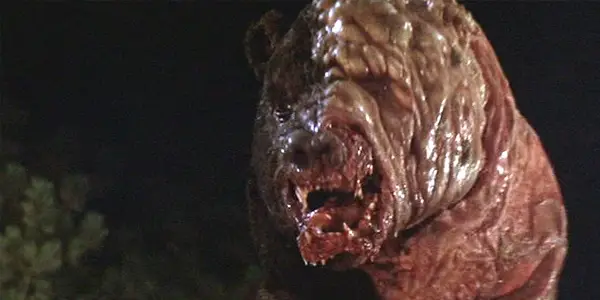
The only real horror film John Frankenheimer ever directed is this bizarre yet effective monster movie, Prophecy. It’s not subtle in its thematic material, which touches upon the environment and the toxic effect of humanity on nature. One of Frankenheimer’s gigs that he did for the money (a claim he stated himself during press interviews for the film), Prophecy lacks the polish and technical efficiency of Frankenheimer’s best films (titles that include The Train, Seconds and Dead-Bang). What makes Prophecy still watchable is its crazy antagonistic creature (an ambiguous mutant bear) and outrageous kills (anyone who has seen it will always remember the sleeping bag scene). This film is not to be confused with The Prophecy, a series of sci-fi horror films which featured the great Christopher Walken.
A Logging company’s ventures in a forest causes some imbalance, which somehow creates a giant mutant-bear creature that starts to kill any human it can find. A group of environmentalists are enlisted to go in and stop the creature before it reigns further terror, with the cast including Talia Shire, Armand Assante and Robert Foxworth. One thing to note about the film is that, whilst it’s called Prophecy, there’s actually no ‘Prophecy’ mentioned in the film at all. It joins a long list of grindhouse films which had intriguing titles that actually had no bearing on the plot.
Made during Frankenheimer’s descent into alcoholism (an unfortunate dive that affected many of his later films), the film is severely lacking in coherency and technical greatness, especially when compared to his earlier, quite terrific pieces of work. Whilst some people may debate Prphecy‘s status as “So Bad It’s Good” (the current day census labels it as quite underrated), the film’s unorthodox approach to the killer animal horror subgenre is too unusual to ignore. It’s a movie with enough entertaining death scenes and interesting choices that it should not be dismissed as flat-out bad, just one with production problems.
3. Vampire’s Kiss (1988, Robert Bierman)
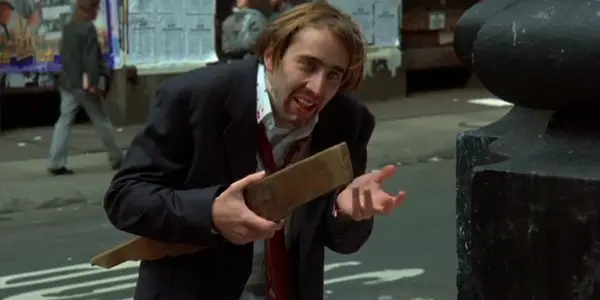
In a society that demands every new pop culture injection be converted into a repetitive online meme (see the current saga of Ken Bone or even the recent Harambe controversy), it’s interesting to look back at one of the most popular and on-going cinematic online obsessions – the cinema of Nicolas Cage.
One of the many Coppola family members working within Hollywood, Cage was an actor who got his start in teen comedies (Fast Times at Ridgemont High and Valley Girl), slowly becoming an A-List star through his Oscar-winning performance in Leaving Las Vegas and his string of successful action films (Con Air and The Rock), before hitting a huge slump in popularity due to a series of poorly received films, the fate of many Hollywood actors.
Due to his often-exaggerated style of acting that sees him giving 110% no matter what, online film communities began an obsession with Cage, stemming from his crazy performance in The Wicker Man remake, which opened up a series of unhinged Cage performances in films such as Deadfall, Matchstick Men and Vampire’s Kiss. Vampire’s Kiss is a hard film to describe, a self-proposed “black comedy” (in the same vein as Tommy Wiseau’s The Room). This particular film is an absurd take on the vampire genre.
To define a plot to this film is quite hard, as it coasts on a very thin premise for most of its 90-minute runtime, filling most of its time with scenes of Cage absolutely losing his mind or interacting with the supporting cast in a series of senseless scenes that defies any standard narrative practices. Businessman Peter (Nicolas Cage) lives a pretty easy life, going between his office job, therapy sessions, and frequent one-night stands. On one particular night with a woman, Peter hallucinates (or does he?) that he is bitten by a vampire, which starts a lengthy and painful transition for him to become a vampire. As this goes down, Peter questions his sanity, as to whether he really is becoming a vampire or he’s just having a mental breakdown from the stress of his intense work-life.
Due to his lengthy vampire transitional sequences, Vampire’s Kiss features many scenes of Nicolas Cage seemingly improv-ing, as he acts out different aspects of vampire life. These include growing fangs (which is accomplished by Cage wearing a child’s pair of toy teeth), eating animals, and avoiding sunlight. Whilst these scenes are extremely funny in their absolute insanity, to call it a good film is quite hard. The plot is thin and incoherent, the beginning is quite slow, and the acting is quite bad overall.
The reason for this recommendation in the “So Bad It’s Good” category is highlighting the shift in the Hollywood studio system; just the pure fact that Hollywood would produce and release a film like this back in 1988 is a practice that is completely unheard of today. Nicolas Cage’s latest film, Army of One, a film which promises another unforgettable Cage performance, is being released straight to VOD platforms, the fate for many low-budget comedies nowadays. If you want to see a hilarious Nicolas Cage film that’s not The Wicker Man (outside of the Cage scenes, that one is quite a drag to sit through), Vampire’s Kiss will totally fill that gap.
4. Beast From Haunted Cave (1959, Monte Hellman)
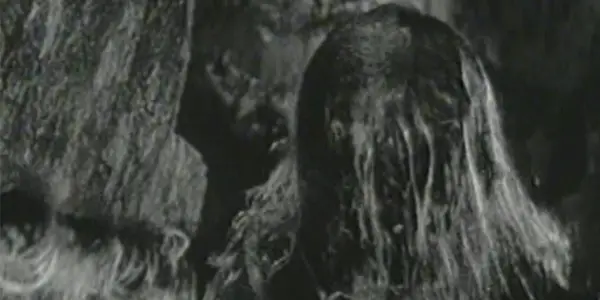
Monte Hellman was just one of the many talented filmmakers that had their careers assisted by one of the greatest independent filmmakers of all time: Roger Corman. Whilst you may argue about the quality of Corman’s films themselves, the impact that he had on the industry is crazy, making his honorary Oscar in 2009 totally deserved.
Hellman was one of Corman’s first proteges, working on many of Corman’s earlier works before being given the direction gig for the horror/bank heist hybrid Beast from Haunted Cave. Shot back to back with Ski Troop Attack (a common budget saving technique of Corman’s), Beast From Haunted Cave was the low budget success that essentially launched Hellman’s career, a filmography of existential genre films, a major change in tone from his work here.
Essentially a remake of 1957’s Naked Paradise (one of Corman’s first films), Beast From Haunted Cave centres on a group of criminals, who plot a bank robbery in order to steal a load of gold bars. After a successful heist, the group retreat to a secluded cave in the forest, which just happens to be the lair of an ambiguous beast, which starts to slowly kill each of the members, leaving Gil Jackson (Michael Forest), the forest’s tour guide, to track down the beast and finally finish him off.
As noted above, Corman’s productions were usually focused on quantity over quality, meaning that outside of satisfying genre expectations (a creature film having the creature kill people, etc.), overall cinematic quality really was not that important. Hellman’s productions, much like many of his Corman contemporaries, were more important in what they did for the directors themselves, such as providing experience, allowing directors to experiment with form, and overall revitalising the independent film movement at the time.
Beast From Haunted Cave falls in the “So Bad It’s Good” genre due to the extremely poor monster effects, the strange gangster/horror hybrid (with the only contemporary equivalent being From Dusk Till Dawn), and the subpar acting. Whilst not the hilarious type of “So Bad It’s Good” film, Beast From Haunted Cave is more an interesting experiment in low budget filmmaking, especially for its time.
5. Invaders of the Lost Gold (1982, Alan Birkinshaw)
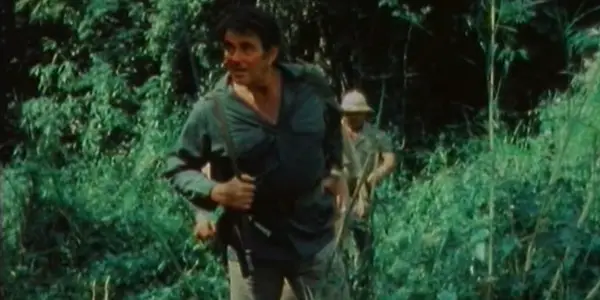
As mentioned before with The Manitou, every hit film (especially horror) will always come with a series of imitators and unofficial sequels. The underground success of Ruggero Deodato’s Cannibal Holocaust brought on an entire sub-genre of cannibal films, with the most famous followers being Cannibal Ferox and The Man from Deep River. Mostly Italian-based productions, the cannibal sub-genre was a short-lived one that thrived in the early ’80s, especially during the infamous Video Nasties period. As the formats of the films were usually the same (unsuspecting people being eaten/killed by ambiguous cannibal tribes), the genre grew repetitive and old very quickly, to be replaced by the slasher as the hot go-to horror genre. Invaders of the Lost Gold is one of those imitators, a cheap and nasty war/horror movie hybrid that is a complete failure.
A group of American mercenaries (including genre staples Woody Strode and Stuart Whitman) head into the jungles of the Philippines to look for some lost treasure that was left behind by a lost group of Japanese World War II fighters. They find that the group was killed and eaten by a group of savage cannibals, who start to slowly devour and kill the intruding Americans.
Anyone expecting an outrageous adventure that mixes elements of the Indiana Jones franchise and Cannibal Holocaust will surely be disappointed, even when the film is attempting to try anything outrageous to capture the audience’s attention. Within the first 5 minutes we see the Japanese soldiers slaughtered by the cannibals, in a gloriously trashy fashion that’s filled with lame effects, messy editing, and poor production design. The typical nasty grindhouse film that was purely made to capitalise on a popular genre to make an easy profit, Invaders of the Lost Gold is a much more interesting premise than it is an actual film. The ‘So Bad It’s Good’ status is awarded due to its frequent amount of jarring sequences, the predictable twist ending, and flimsy practical effects.
6. Gone with the Pope (1976, Duke Mitchell)
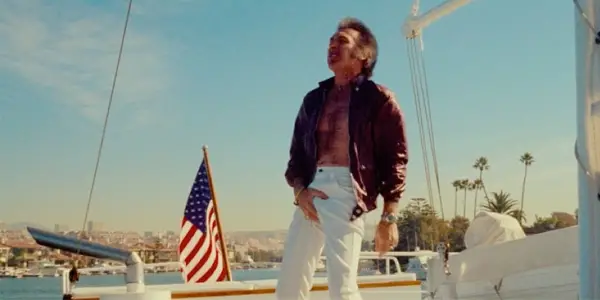
Going on the theme of low-budget imitations of hit films, let’s look at Duke Mitchell’s insane Martin Scorsese homage Gone With the Pope. The self-titled “King of Palm Springs”, Duke Mitchell was primarily known as a crooner, whose musical act frequently toured in Las Vegas and California, and was famously friends with the Rat Pack during their prime. Alongside this, Mitchell was one half of a comedy duo with Sammy Petrillo, a duo whose comedic style was so similar to Dean Martin and Jerry Lewis that Lewis actually sued them, a legal entanglement that interfered with the pair’s only film: Bela Lugosi Meets the Brooklyn Gorilla (a film which could also be placed on this list).
In his later years, Mitchell turned to independent filmmaking, funding his own genre pictures using his friends as actors and his touring locations as film sets. His first film, Massacre Mafia Style, is his only fully finished feature film, a gory tribute to the Godfather series. His second feature, Gone with the Pope, was actually unfinished, another Godfather tribute that infused the religious subtext frequently seen in Martin Scorsese’s films.
After prints of the film were found by his son, Grindhouse Releasing (the film restoration company founded by Bob Murawski and the late Sage Stallone) edited the remaining prints of the film, remastering the sound and attempting to fill in the gaps that were left to be filmed. Grindhouse Releasing have done a terrific job, despite the obvious technical issues they must’ve dealt with due to Mitchell’s production difficulties. The “plot” of the film revolves around four ex-convicts (lead by Mitchell) who decide to kidnap the Pope, ordering a ransom from Catholics worldwide ($1 per Catholic, Mitchell orders). The plan starts to fall apart, however, as the Pope himself shows the criminals the positive aspects of having a Catholic lifestyle.
Cinematic problems that appear throughout the film include: an entire scene that’s out of focus, actors blatantly reading off cue cards, plot holes you could drive a car through, and frequent B-Roll shots to fill up time (the film is under 80 minutes). Despite all these obvious issues, the film has an understated sincerity to it, as you feel that Mitchell really tried to do the best he can with the limited amount of resources he had. There’s a certain charm to the film; helped by its unique premise and exploitation sensibilities, Gone With the Pope is a perfect “So Bad It’s Good” candidate.
7. Chicken Park (1994, Jerry Cala)
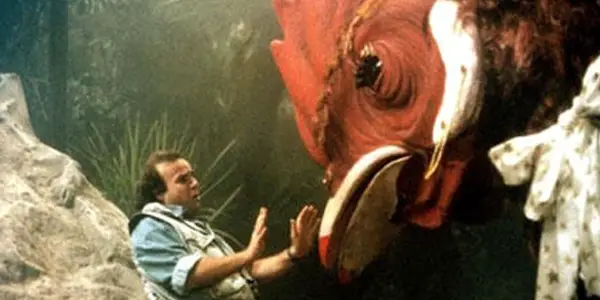
In the wake of the huge success of Scary Movie in 2000, a horrible trend emerged. Instead of a parody movie being a targeted jab at a certain popular genre (Airplane! being a pastiche of the Airport franchise), the parody movie slowly became an extremely lazy collection of modern day pop culture references, ones which age horribly as soon as they hit theatres. Whilst Scary Movie used the frame-work of Scream (that itself already being a satirical film), it managed to at least stick to a plot, having the jokes spring from its basic premise, making fun of established horror tropes mixed with scatological and stoner humour. One of these imitators was Italian comedian Jerry Cala’s directional debut feature, Chicken Park, an incredibly dated parody movie that could be one of the most bizarre viewing experiences ever.
There’s no point trying to detail the plot, as it’s a messy retread of the Jurassic Park narrative (but with giant chickens, hence the title), which is glossed over via the use of a messy mix of other movie references and slapstick humour. Whilst other parody films are annoying due to their apparent laziness and lack of charm, Chicken Park is an interesting watch because of how utterly bizarre it is. Jerry Cala, a famous comedian/actor in Italy, lacks any onscreen charisma here, so his constant flirtations with women throughout the film comes off as a derivative of Woody Allen’s works, but at least you understood what women could see in Allen (I realise that the joke is that the unattractive man can charm these women, but it’s never funny or interesting in any way).
Chicken Park is largely unheard of worldwide, as the Turkish production skipped any theatrical release due to distribution issues, meaning that it was dumped on television and VHS, living in obscurity to this day. A paltry DVD release in Australia and Europe has kept the film somewhat alive, so people can witness the hand-drawn title card sequences, frequent sexist/racist bouts of humour, and the incredible amount of bad jokes that are fired out so frequently that it’s crazy none of them are any good. This film is perfect “So Bad It’s Good” material, a complete misfire that has you completely questioning everything as it happens, a comedy that provides absolutely zero (intentional) laughs and a lesson in why the parody film genre needs help.
Are there any other ‘So Bad It’s Good’ films that you can recommend?
Does content like this matter to you?
Become a Member and support film journalism. Unlock access to all of Film Inquiry`s great articles. Join a community of like-minded readers who are passionate about cinema - get access to our private members Network, give back to independent filmmakers, and more.













